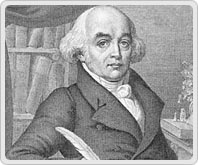Get introduced to the Healthy you, to the Beautiful you, to the Real you
00 91 987 357 9007
Homeopathy Origin and History

The treatment principle of Homeopathy is based on the 'like can cure like' which means an illness should be treated by a substance capable of producing similar symptoms to those being suffered by the patient. This concept of treatment was first coined by the Greek physician Hippocrates (460 -377 B.C) in the 5th century B.C. Hippocrates is known as the 'father of Medicine'. He was the first to believe that careful observation of the symptoms of a specific disease and its reaction which has its own power of healing should be considered before choosing the cure and treatment of diseases.
Later in the early 16th century, Swiss doctor Paracelus (1493-1541) worked on the Hippocrates theory of 'like can cure like' and found that diseases were linked to external forces such as contaminated food and drink. He then suggested that these ailments can be cured by catalyzing body's own natural ability to heal itself. But this medicinal advocacy didn’t get popularity at that time.
Though the Homeopathy treatment is known for centuries but the present form of this treatment evolved from the work of German physician Dr. Samuel Hahnemann (1755-1843). He completed his graduation from medical school in 1779 and started his own medical practice. He soon began his first homeopathic experiments in 1790. He was an experienced physician, a competent chemist, good mineralogist and botanist, and an able translator of eight different languages. He discovered that patients with certain diseases could be cured with substances that produce similar toxic effects, e.g. cholera could be cured with a dose of arsenic, scarlet fever with a dose of belladonna etc.
While working on Homeopathy medicinal theories he tested and tried several chemicals to known their desired results on an individual treatment. On the basis of his analysis he classified disease symptoms into three major categories. Symptoms that were most commonly found for each substance he called them first line or keynote symptoms. Second line symptoms were less common and the third line symptoms were rare. On the basis of these symptoms he derived a 'drug picture' for various diseases. He continued this experiment for 6 years, testing a wide range of substances. After that he compiled complete 'drug pictures' on the basis of his careful research which became the basis of present day homeopathy practices.
In 1776, Hanhemann published his book 'A new principle for ascertaining the curative powers of drugs and some examination of previous Principles', on the basis of his extensive research. In this book, he explained the key principle that a drug taken in small amount will cure the same symptoms it causes when taken in large amount.
In three major publications Hahnemann's showed how he developed various Homeopathy curative ideas based on the various symptoms. In the 'Organon of Medicine' (revised six times), the fundamentals are laid out. 'Materia Medica Pura' records the symptoms of the medicine to be given. And in 'The Chronic Diseases, Their Peculiar Nature and Their Homeopathic Cure', he showed how the natural diseases become chronic in nature.
The advancement and development in scientific field added several new theories to this medicinal treatment. The proper diagnosis and availability of new chemicals added new theories and practices to the Homeopathy treatment. In the nineteenth century this revolutionary treatment method rapidly spread all over Europe. Some of the major contributors in this medicinal treatment are Clemens von Boenninghausen, Adolph Lippe, Robert Dudgeon, Timothy F. Allen, James Compton Burnett, Johann Stapf and Constantin Hering.
Later on the Colonial Expansions of British Empire brought this treatment to several Commonwealth countries such as India, Pakistan, Bangladesh, Sri Lanka and South Africa. In India this treatment became popular because of its similarity with traditional Ayurvedic medicine. Apart from this affordability and availability makes it popular among masses.
-
 Homeopathy in India
Homeopathy in India - About Homeopathy
- Origin and History
- Homeopathy Remedies
- Homeopathic Medicines
-
 Ayurveda in India
Ayurveda in India - About Ayurveda
- Origin and History
- Kerala Ayurveda
- Ayurvedic Therapies
- Ayurveda in Daily Life
- Ayurvedic Medicines
- Ayurveda Resorts / Shalas
- Kerala Ayurveda Resorts
-
 Yoga in India
Yoga in India - About Yoga
- Origin and History
- Types of Yoga and Yoga Positions
- Yoga Therapies
- India Yoga Centers
-
 Meditation in India
Meditation in India - About Meditation
- Origin and History
- Techniques and Postures of Meditation
- Benefits of Meditation
- India Meditation Centers
-
 Spa in India
Spa in India - About Spa / Introduction
- Origin and History
- Spa Treatments
- India Spa Resorts
- Ananda Spa Resort
-
 Naturopathy in India
Naturopathy in India - About Naturopathy
- Origin and History
- Naturopathy Treatments
- Naturopathy Centers in India
Copyright © 2020, www.IndiaWellness.org
Recognized by Ministry of Tourism, Government of India
National Tourism Award Winner
Powered by SOFTTIX






